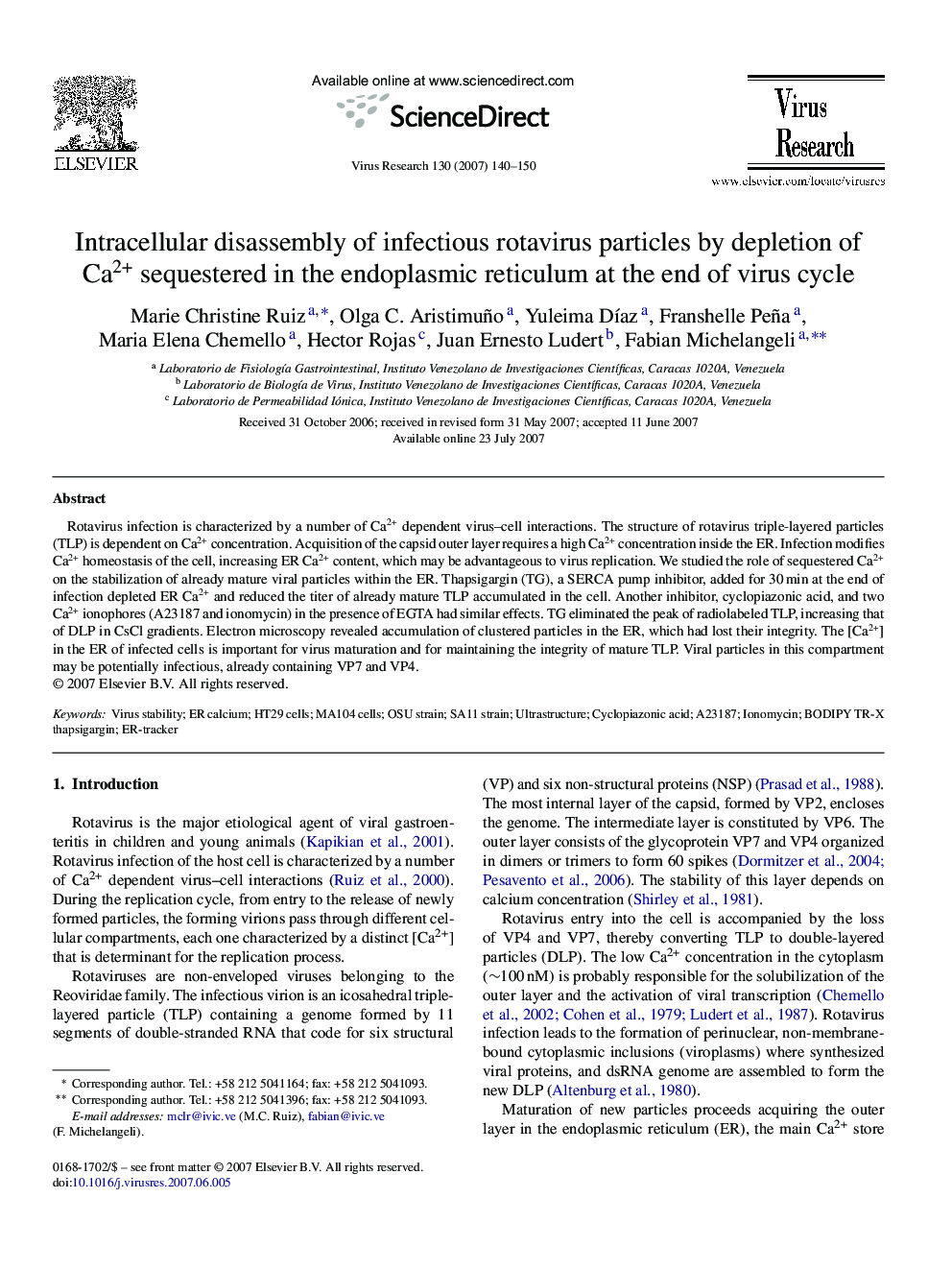| Article ID | Journal | Published Year | Pages | File Type |
|---|---|---|---|---|
| 3430660 | Virus Research | 2007 | 11 Pages |
Rotavirus infection is characterized by a number of Ca2+ dependent virus–cell interactions. The structure of rotavirus triple-layered particles (TLP) is dependent on Ca2+ concentration. Acquisition of the capsid outer layer requires a high Ca2+ concentration inside the ER. Infection modifies Ca2+ homeostasis of the cell, increasing ER Ca2+ content, which may be advantageous to virus replication. We studied the role of sequestered Ca2+ on the stabilization of already mature viral particles within the ER. Thapsigargin (TG), a SERCA pump inhibitor, added for 30 min at the end of infection depleted ER Ca2+ and reduced the titer of already mature TLP accumulated in the cell. Another inhibitor, cyclopiazonic acid, and two Ca2+ ionophores (A23187 and ionomycin) in the presence of EGTA had similar effects. TG eliminated the peak of radiolabeled TLP, increasing that of DLP in CsCl gradients. Electron microscopy revealed accumulation of clustered particles in the ER, which had lost their integrity. The [Ca2+] in the ER of infected cells is important for virus maturation and for maintaining the integrity of mature TLP. Viral particles in this compartment may be potentially infectious, already containing VP7 and VP4.
